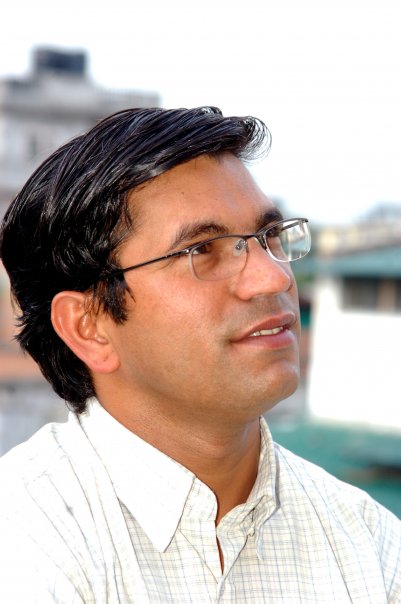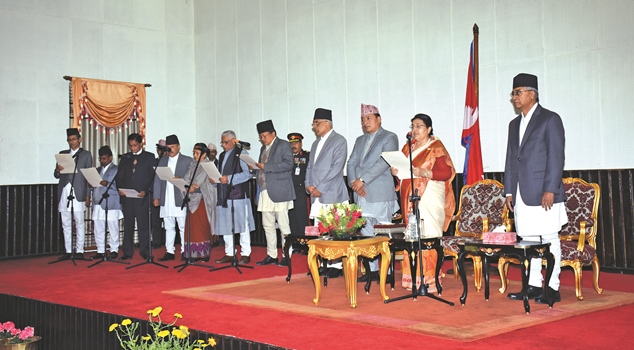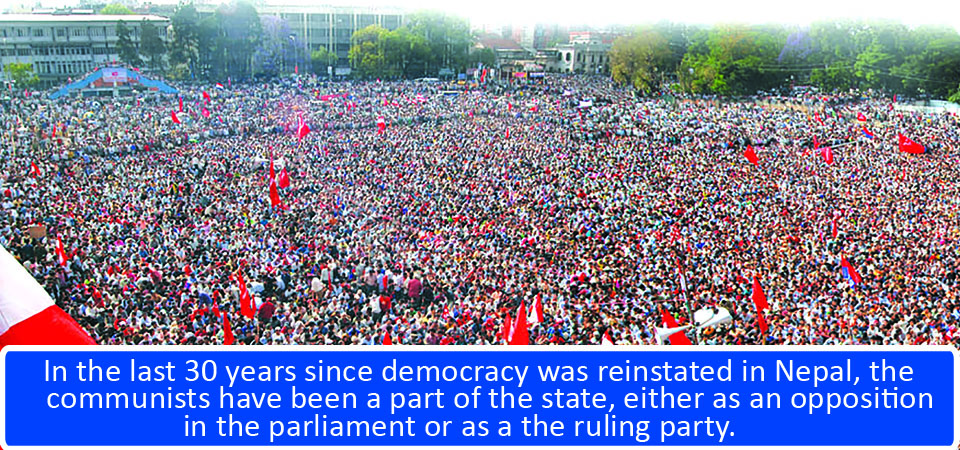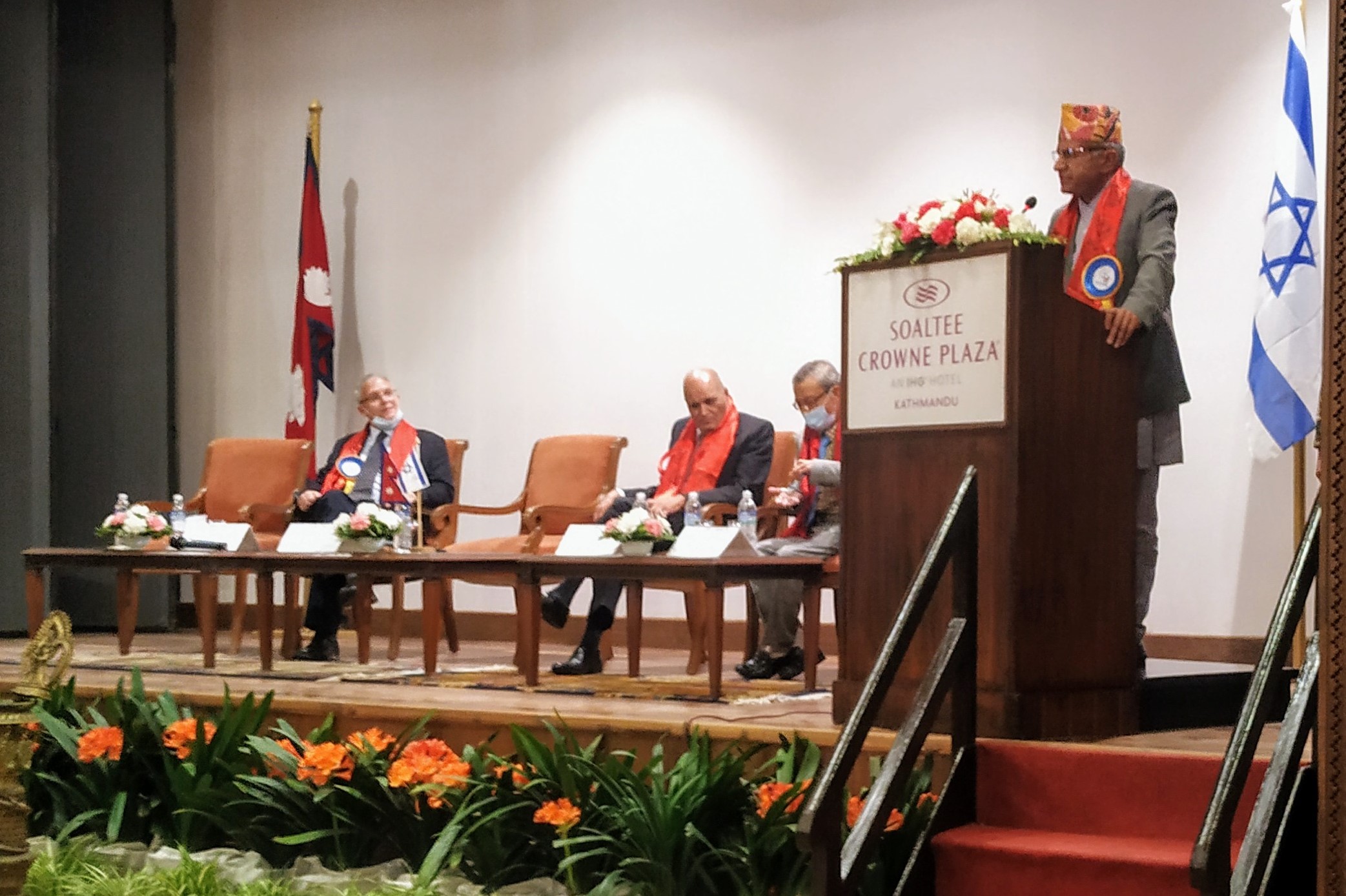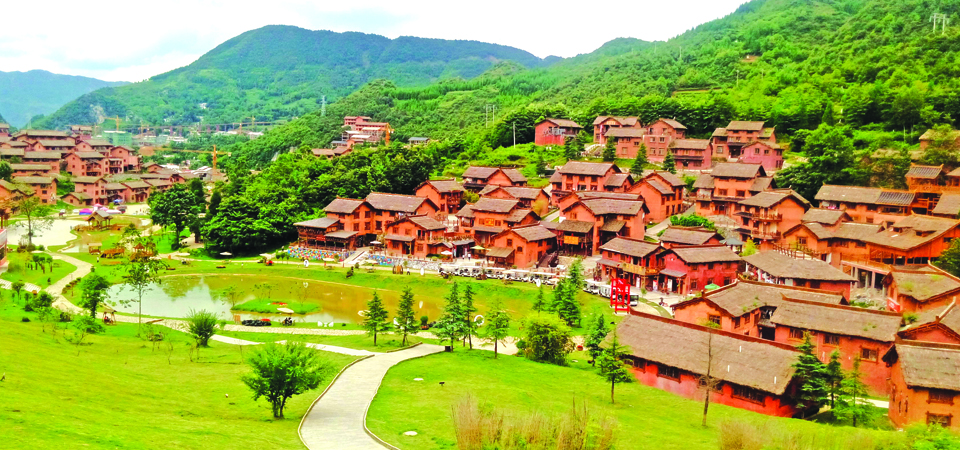Water supply reality through community participatory videos, rural water users foreground their stories
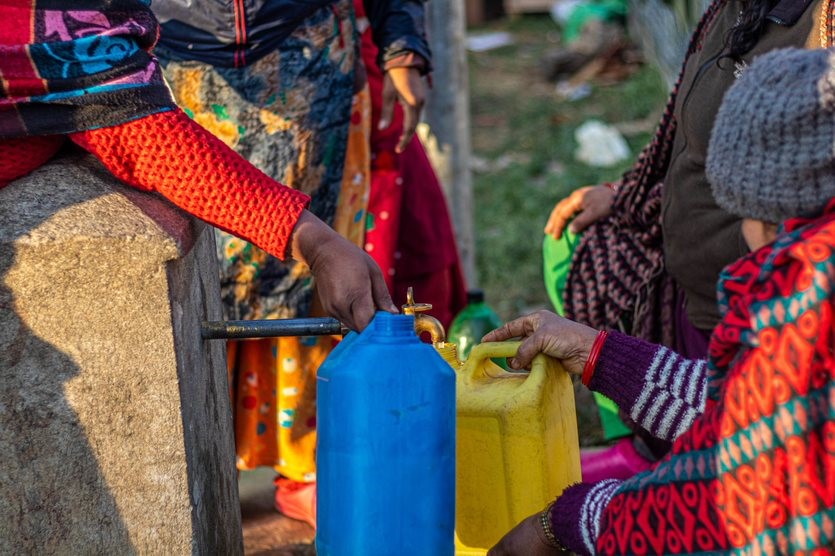
By Nanda Lal Tiwari
Nepal is known for its abundance freshwater. Having 2.7 per cent of fresh water out of the total freshwater amount on Earth, it is considered the second richest country in freshwater. Some 6,000 rivers and streams that originate in the Himalayas and the green hills flow through Nepal into India carry 8.6 million cubic meters of water, which equals to 9 million liters of water for each and every Nepali a year. If such macroscopic data were to depict the real life situation, there should have been sufficient and easy access to water for everyone in Nepal. The truth is, water availability does not automatically result in water access for everyone as only less than half (49.5%) of population have access to piped water for drinking although 87% are reported to have basic water supply facility. But then a report has it that only 25% of drinking water distribution lines are fully operational.
Such macro level data about access to water and water supply facility are important on their own right, but more important is how water is accessed, how the water supply systems are functioning and how access to water can be made more inclusive as well as affordable, particularly in rural areas, as Nepal steps forward to achieving the Sustainable Development Goals (SDGs), particularly SDG 6. A window into answers to such questions are framed in the research based audio visual materials produced by International Water Management Institute (IWMI) as part of a research project funded by DFAT under Water for Women fund. By bringing together the voices of the users of the water supply systems as well the local government officials of Gurans Rural Municipality-8 of Dailekh district and that of Chandranagar Rural Municipality-6 of Sarlahi district, the participatory videos depict a microscopic reality of how people in Nepal's villages are managing drinking water and how the supply systems function. More importantly, the videos were made in a great deal through participation of the local water users themselves, with technical inputs and training by the research project team to the locals.
Voices
On watching the videos it becomes clear that access to water is not easy in rural areas, both in the hills and in the plains called Tarai, particularly for the financially and socially marginalised people, women and people with disabilities.
People at the community level have formed water user committees to manage water supply systems and in many cases they are supported by the local government while in some they are not. For instance, Tham Bahadur Khatri, Chairperson of Naula Upper Magurka Water User Committee of Gurans Rural Municipality (GRM) in Dailekh district, shares that they received limited support from the local government when the intake of the supply system was swept away during the monsoon.
With the state policy to involve water users in the construction and management of the local level water supply systems by means of their investment for the ownership of the project by the locals, people have been made to pay for construction and consumption as service charge and tariff. Such a provision is no doubt not always favourbale for the extremely poor in this case. However, user committees and the local government units have come up with an alternative - public taps for the poor.

Women filling water jars at a public tap in Dailekh. Photo credit: Onion Films
While springs or surface water is the source of drinking water for the people in the hills, for the people in the Tarai region, it is the ground water. To draw the ground water for use, one needs to install at least a shared hand-pump, in places where there is no water supply system, which costs much for the poor. Bina Devi Sah, deputy chairperson of Chandranagar Rural Municipality in Sarlahi, a district in Tarai region, makes it clear when she says, "Drinking water shortage is huge here because we have many Dalit settlements (settlements of socially marginalised group which, being poor, cannot afford for private hand-pumps and is thus compelled to depend solely on few public hand-pumps)". This illustrates how the local levels are yet to devise and execute appropriate plans so that the financially and socially marginalised groups have an equitable access to water.

Amit Kumar Ramani, a water user at Chandranagar, Sarlahi, poses for photo while going to his neighbour's to fetch water. Despite being poor and a person with disability, his request to local government for financial support to install a hand-pump at his home has gone in vain. Photo credit: Onion Films
People living with disabilities undergo greater hassles in accessing water. In the words of Jharsingh Khadka, a water user of GRM in Dailekh, influential people have easier access to water for a longer time whereas the issues of people living with disabilities are ignored although they raise voices in the water user committee meetings. Amit Kumar Ramani, a person with disability and a poor economic condition, of Chandanagar Rural Municipality (CRM), Sarlahi, has similar bitter feelings because the Ward office is yet to support him to install a hand-pump at his house that would facilitate water access for drinking, sanitation, hygiene and so on, despite his repeated requests.
No doubt, a lack of sufficient and safe water affects personal sanitation and hygiene. In case of adolescent girl students, it even affects their education if the school they attend lacks regular water supply during the menstrual cycle. Deepa Oli, a student in GRM, Dailekh, who walks for 30 minutes to reach her school, shares that although her school has child-friendly taps, the supply is irregular and in times of menstruation, she has to come back home for sanitation which forces her to miss important lessons, and if her period and exams coincide, she misses crucial revision classes which also affects her grades. Dev Kumari Mandal, a resident in CRM, Sarlahi, says adolescent girls skip school for four days during the period as water is quite scarce at school.

Women filling a bucket with water using a hand-pump at Chandranagar, Sarlahi. Photo credit: Onion Films
For single women, and socio-economically disadvantaged women like Nayansara BK of Dailekh and Karo Devi Singh of Sarlahi, access to drinking water from the supply systems is beyond imagination because they cannot pay for it. They should depend on public taps or community hand-pumps which tend to be crowded and it could take hours to get a bucket of water. Worse, water is supplied for only a couple of hours in such public taps. In case of Tarai, those who do not have a hand pump at their house also go to the neighbour's to fetch drinking water from the hand pump. For washing, cleaning and bathing, these poor people have no option, but go to the ponds and rivers where the water is much polluted.
In some cases, the water provided through the supply systems is so scanty that a household gets about 30 liters a day. Amrita BC of GRM, Dailekh, shares her feeling of water shortage as: 'I wish we had a water lifting system here and we could get sufficient water for bathing, washing and cleaning, and we did not have to go afar to fetch water for such purposes.' Fetching water from public/community hand-pumps is labour intensive for the people in the southern plains. Rajraniya Majhi, a ward member of CRM-6, Sarlahi, says that it takes hours for socially marginalised Mushar people to fetch water from public hand-pumps because there are only 20 hand-pumps for 200 Mushar households in the ward. Fortunately, as a ward member, she has submitted an application in the local government to increase the number of pumps and got an assurance. This could save time for water collection by women and girls who still have the primary responsibility for managing water in household level in the study area.
As in other living standard indicators, remittance has contributed to improve people's access to water. Considered a member of highly marginalized social groups, Pampha BK of Dailekh would suffer discrimination on the basis of caste hierarchy and rebukes while fetching water from public taps. But, now she has a private tap installed at her house because her husband who works abroad sent her money to pay for the tariff and construction cost. Geeta Devi Singh, wife of a migrant worker and a resident of CRM, Sarlahi, is no less elated now because she has a private hand-pump installed at her house by the money sent from abroad by her husband. "My husband works in Saudi Arabia. He sent me money and now I had a hand-pump installed at my house. Although water quality is not as good as expected, it is a lot easy now," she shares her happiness.
Further, concerns of the woman-headed households or the wife of a migrant worker should be considered in course of construction and operation of public water supply systems. A case of Singh makes it clear when she says she has no idea when water supply will start from the overhead water tank which is under construction. She complains that she had to pay the revised participation cost because she happened to be away from home for health check at the time of collection of the cost.
Inclusion in true spirit
As local governments, under the federal structure, are powerful to formulate policy and programmes to ensure access of people to water in their area, it is encouraging to hear them that they have come up with policy and plans. Khem Raj Oli, Chairperson of GRM, Dailekh, says the Gaupalika has made water lifting projects for settlements in the hilltops and slopes where sources of water are located down the hill. Mahendra Mahato, Chairperson of CRM, Sarlahi, believes the under construction overhead tank for supplying drinking water to households will address many problems related to safe drinking water. Additionally, they have other policy and plans to address problems related to water, sanitation and hygiene. However, as the videos show, there is much to do with regard to making access to water inclusive in true spirit so that concerns of the poor, marginalised, women and persons with disabilities are addressed from the local governments themselves and the water user groups at the community level. And the participatory videos discussed above can be a very useful resource materials for many local levels to focus on issues which usually get little attention while devising inclusive water, sanitation and hygience (WASH) plans and implementing them. The videos provide insights on ways to make more inclusive WASH projects so that the women, poor, marginalized and minority groups including the single women and the people living with disabilities enjoy inclusion and its fruits in their everyday life.
Recent News

Do not make expressions casting dout on election: EC
14 Apr, 2022
CM Bhatta says may New Year 2079 BS inspire positive thinking
14 Apr, 2022
Three new cases, 44 recoveries in 24 hours
14 Apr, 2022
689 climbers of 84 teams so far acquire permits for climbing various peaks this spring season
14 Apr, 2022
How the rising cost of living crisis is impacting Nepal
14 Apr, 2022
US military confirms an interstellar meteor collided with Earth
14 Apr, 2022
Valneva Covid vaccine approved for use in UK
14 Apr, 2022
Chair Prachanda highlights need of unity among Maoist, Communist forces
14 Apr, 2022
Ranbir Kapoor and Alia Bhatt: Bollywood toasts star couple on wedding
14 Apr, 2022
President Bhandari confers decorations (Photo Feature)
14 Apr, 2022
